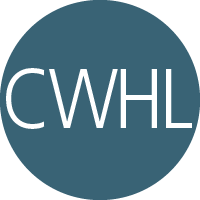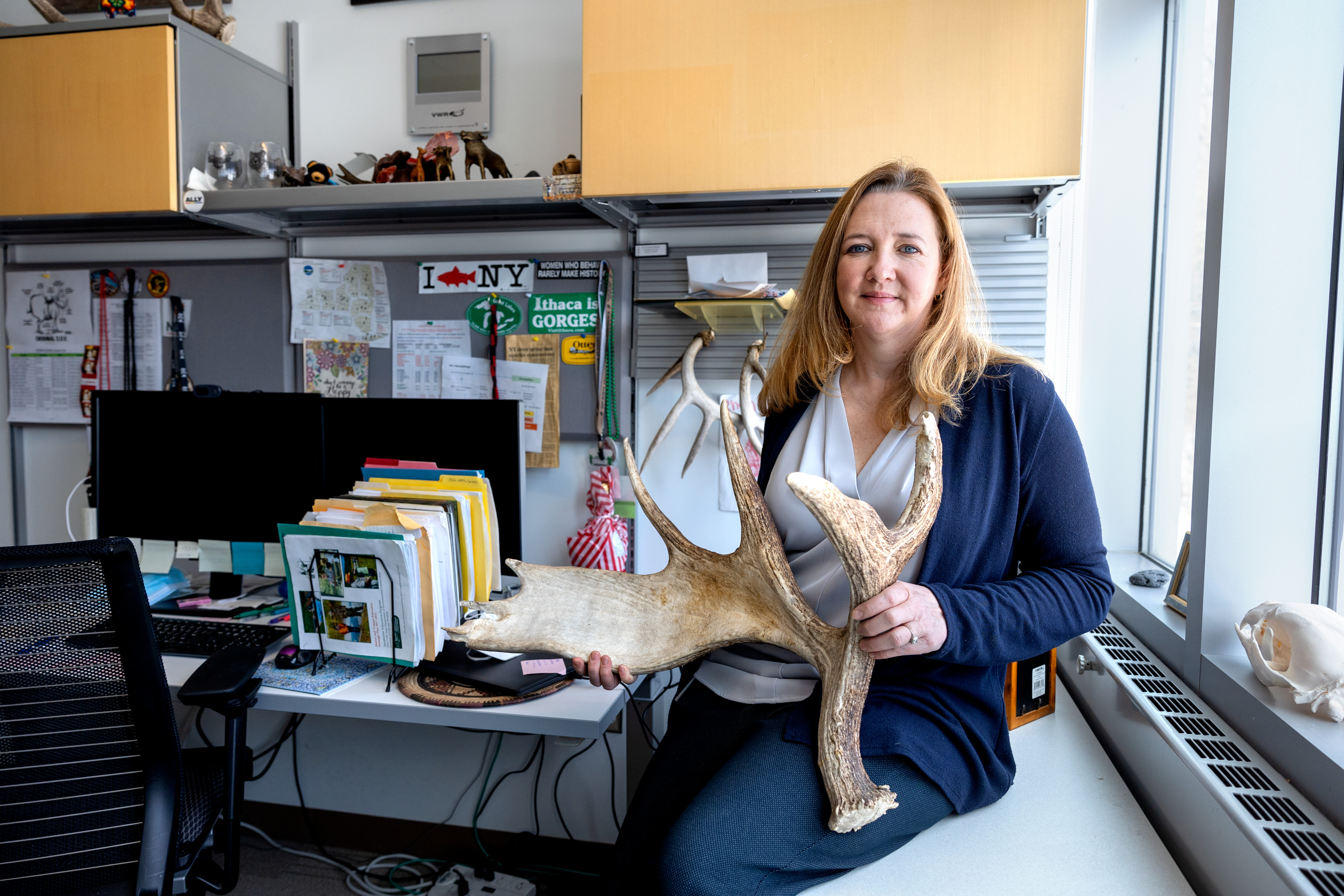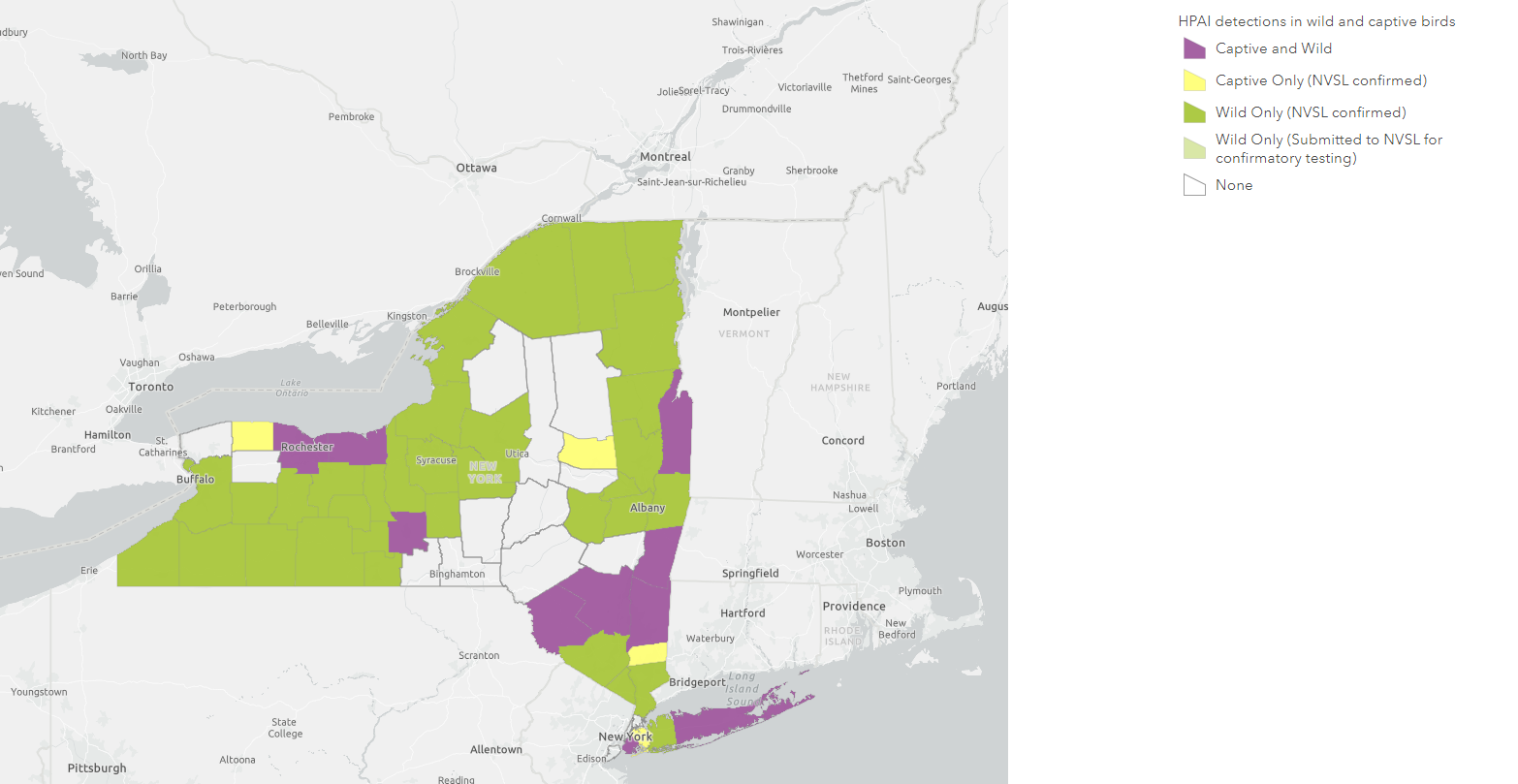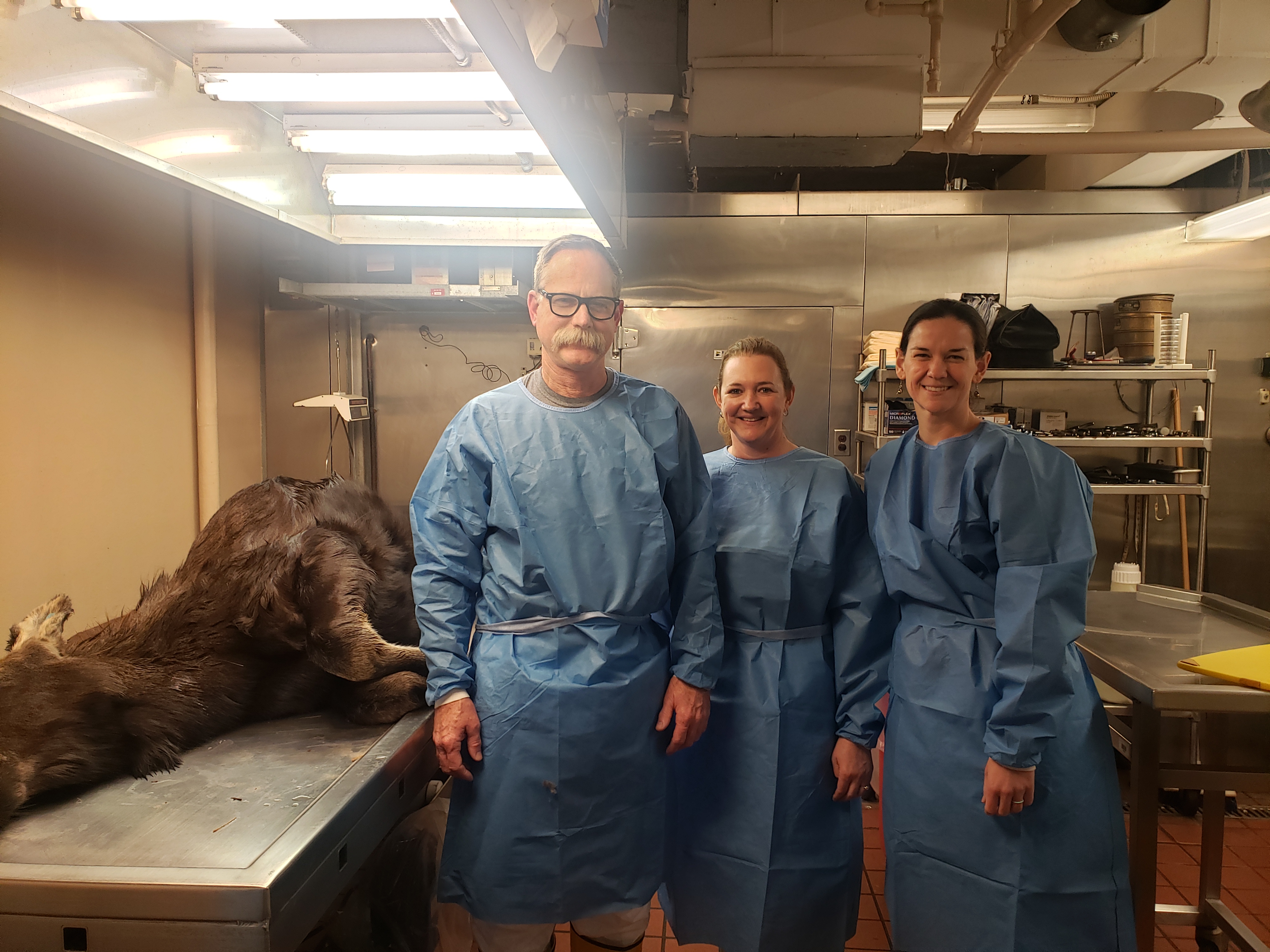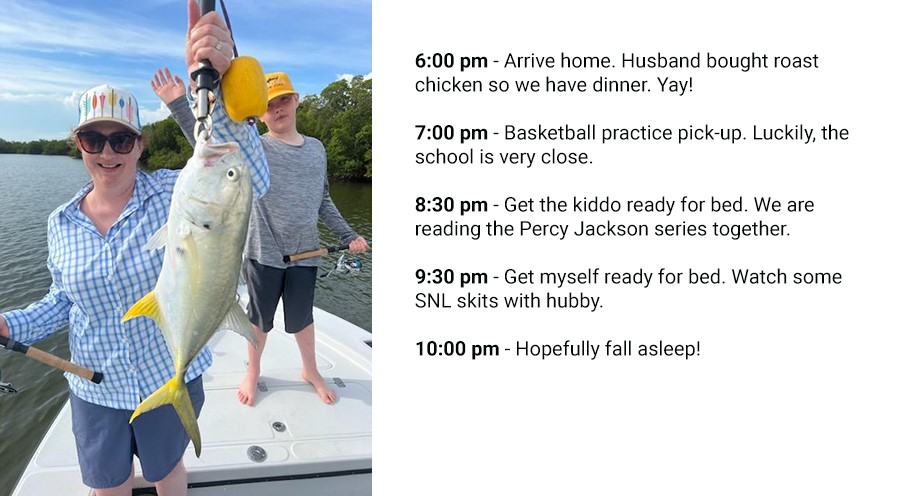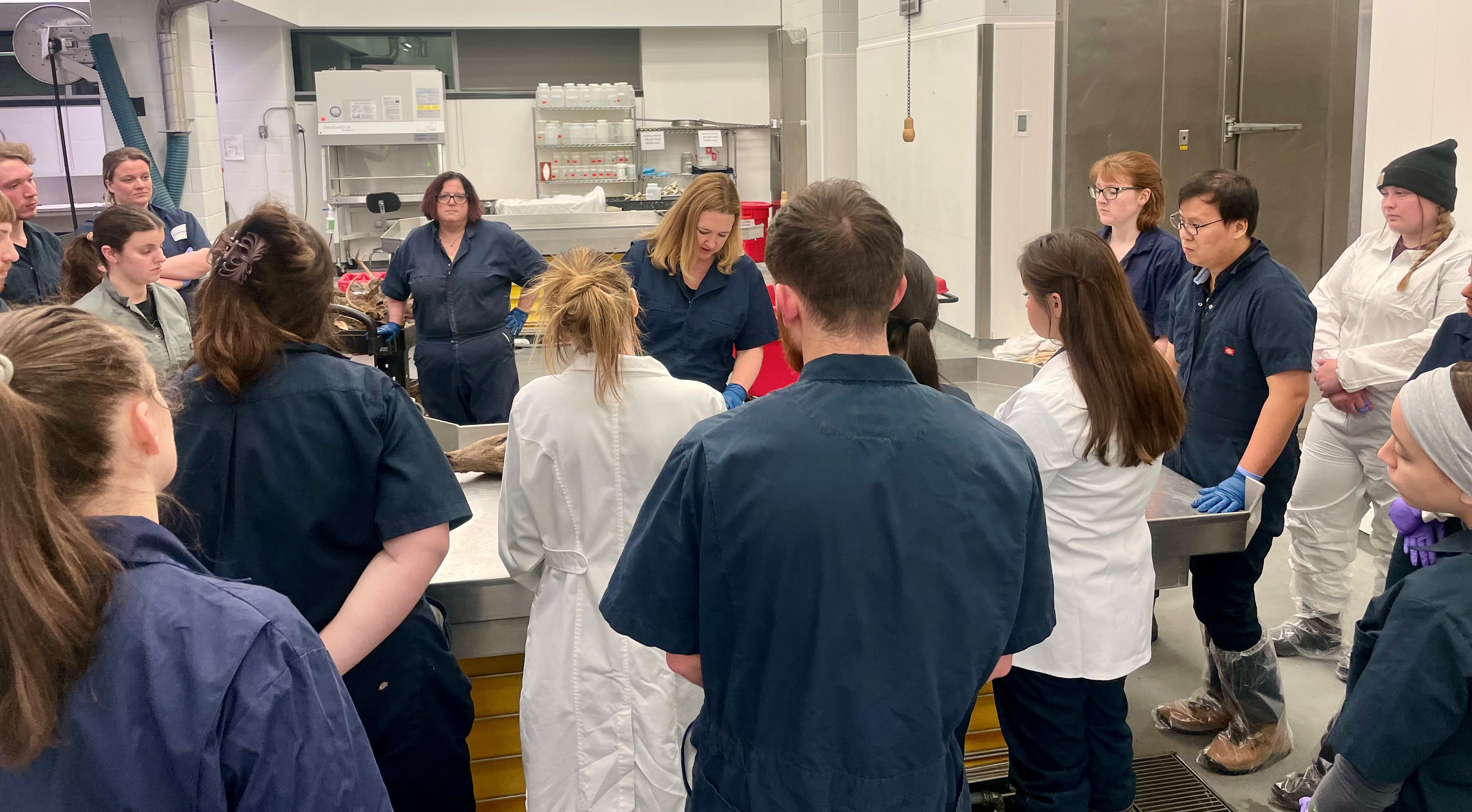A Wildlife Disease Ecologist: Krysten Schuler
Hi everyone, we’re starting this monthly series “A Day in the Life of…” to give you a snapshot of the daily happenings of us at the Cornell Wildlife Health Lab (CWHL). Granted, not every day is the same, so we’re just trying to give the gist of what we do.
99.9% of my days are in the office now. “Office” may mean home or at the lab (Animal Health Diagnostic Center, Cornell University), and trips to the “field” are rare. Before I was director of the CWHL, there was more diversity in my activities. Now I am branding myself as a “facilitator-in-chief” trying to strategize how to get things accomplished.
6:00 am - Wake up and get myself ready for work (i.e., no sweatpants).
6:30 am - Wake son and make breakfast. Feed the cat, dog, and horses. Play fetch with the dog.
7:30 am - Get my son on the bus and leave for work. It’s an hour's commute, because my husband works in the opposite direction of Ithaca. Listen to music, NPR, or talk to work colleagues that I know get up ridiculously early.
8:30 am - Arrive at work and check in with people here. Make myself some tea.
Work starts by opening my email inbox to see if any crises need attention. My first job with the U.S. Geological Survey’s National Wildlife Health Center field investigation team taught me to handle crises as a matter of course. Luckily, now I focus on mostly New York State and not wildlife disease outbreaks across the country. Our group partners with the NYS Dept. of Environmental Conservation (NYSDEC) to provide a comprehensive statewide wildlife health program. We work closely with the biologists and veterinarians at the NYSDEC Wildlife Health Unit in Delmar, NY, as well as across the state.
8:45 am - Go to the AHDC lab directors meeting. Take notes to share with the lab. Make a list of tasks to accomplish today on the back of the agenda.
10:10 am - Late for the CWHL meeting because another meeting ran long.
Our most recent issue has been highly pathogenic avian influenza (HPAI), which is killing wild birds and mammals, along with being a huge problem for the agriculture industry. I’m looking at the year-end summary of HPAI cases across the country and trying to decide what information is useful and to whom. We’ve already put out guidance to NYSDEC biologists who may come across a wild species that could be affected. Because it’s a zoonotic disease (transferable between animals and people), we want to make sure the biologists are wearing appropriate personal protective equipment (PPE). Fortunately, this strain of HPAI is largely limited to animals thus far.
Our lab strives to be “data-forward” in sharing knowledge, so at our twice-weekly online lab meeting we discuss how to display data for the public on HPAI, West Nile virus, and other diseases. It’s a delicate balance to strike between providing information and making sure it’s being interpreted correctly. I’m fortunate to have a diverse team (who you will meet in more detail in the “A Day in the Life of…” series over the year) with strengths in complementary areas. After debating how data should be displayed on our website, we plan for short- and long-term solutions.
11:30 am - CWHL meeting ran long, but it was a good discussion. We have several people who work remotely from other states, so it’s important to stay in touch. I start beating back the email barrage. Give up and look at HPAI data while I eat my lunch.
1:00 pm - Discuss the plan for the upcoming workshop at the Northeast Association of Fish and Wildlife Agencies conference in April.
2:00 pm - Review PhD student paper for submission to the Journal of Wildlife Management.
3:00 pm - Meet with the virology director to discuss testing for SARS-CoV-2, EEE, and WNV, publication, and grant submission.
Each day has a few meetings, both scheduled and unscheduled. I don’t get upset if my plan for the day doesn’t turn out the way I hoped, because that’s just the way things go. I usually try to make sure that I review student projects as soon as possible, so I’m not holding up their work. Occasionally, I am asked for media interviews on short notice, most often about chronic wasting disease (CWD). Unfortunately, CWD has been in the news lately because of the first detection in Yellowstone National Park, which I view as a national tragedy. The news headlines are all about “zombie deer disease,” which will get an eye roll from every wildlife health person across the country. Deer are dying of a fatal disease that humans are contributing to by moving live and dead deer and elk around the country, but somehow, we are making it sound like the deer will be coming for our brains. Of course, there haven’t been any known cases of CWD in humans yet, but if that happens it will be a seismic shift for the entire field of wildlife conservation.
3:30 pm - Prep a care package for a lab member who just had surgery.
4:00 pm - It’s quiet; I should work on the paper I need to finish. But I start writing this instead.
5:00 pm - My day wraps up with many emails, moving things forward incrementally…a workshop, a grant proposal, an abstract, making plans to attend a conference in March, several student papers reviewed before submission to journals, hallway meetings. My email inbox is often a black hole, so I try to be diligent about making TO DO lists. Sometimes I’ll write something down that I just finished, so I can have the satisfaction of crossing it off. It also helps to mine those lists for my annual performance review!
Looking out the window, I see it’s already dark at 5 pm. Close the laptop and accept that things will just have to wait until tomorrow. Time to head home. I will check for urgent emails on my phone but try not to work at night if I can help it.
If I had to sum up my job, I would say that I focus on the strategy of how to do science. I was fortunate to have a good PhD mentor who focused on collaboration and helped me develop critical skills. My philosophy has been to always figure out ways to be helpful. That’s becoming an increasingly administrative role. Every day, I am challenged with trivial and non-trivial issues: why won’t my office lights turn on? What are the odds we will get that grant, and is it worth it to apply? How can I help my team and the NYSDEC? How can we set up accommodations for a student with a service dog to work in the lab?
What really excites me is when we have a breakthrough or make progress on a project. We have diverse efforts ranging from the completely theoretical to boot-on-the-ground biologist work. As an ecologist, I enjoy seeing all the linkages between these elements. I want to make wildlife health mean more than just the “absence of disease;” it should be that wildlife populations are resilient to all the challenges that humankind is dishing up. I love that our group came up with a values statement for our lab and is embracing the strategies necessary to make those happen every day. It’s been rewarding to see students come to our lab because of the work we do, then go out in the world and carry wildlife health science forward.

